Hello and welcome to a brand new year! I hope everyone had a peaceful & enjoyable holiday season.
Unfortunately, I have to start off my first post of 2018 with some bad news: the Brown Thrasher that was visiting my feeders throughout December has sadly perished. We believe he was the victim of a Northern Shrike.
I had been watching the Thrasher on the webcam from my in-laws’ house at camp on New Year’s Eve and he was on the feeder up until dusk. That was the last I saw of him. He never showed up the next day (New Year’s Day) & has not been seen since. On January 2nd, however, my husband stepped outside and immediately found this tuft of feathers in the snow right outside our door:
The tuft was about 2.5″ in diameter & each feather was about 2″ long by a 1/2″ wide. We tried our best to justify it being anything else but then someone posted this photo of Thrasher feathers and that was pretty much definitive:
As you can see, the feathers in the bottom centre are a perfect match for the feathers we found outside. My heart was broken with this discovery as we had been rooting so hard for the Thrasher to survive our brutal temperatures this winter when he was supposed to be in Florida or Texas. As this next photo shows, he had already been managing in frigid temperatures quite well!
Everyone who watches the webcam regularly dearly misses the Thrasher, almost as much as I do, I suspect. He was definitely the Rock Star of my Project FeederWatch webcam season. RIP, handsome bird!
My feeders have been exceptionally quiet this winter, overall. Redpolls are 98% missing and have only visited my feeders twice so far this season, only for a minute or two each time.
Pine Grosbeak & Evening Grosbeak numbers are very low, especially the Evenings. My highest count of Pines so far has been 18 and for Evenings, it’s only been 9! I’m used to having 20 to 30 of each in winter. Another odd thing is that I’m not seeing ANY female Evening Grosbeaks. Haven’t seen one since about November. What gives with that??
I do have this lovely fellow coming around once in a while: a leucistic male Pine Grosbeak. He has less red pigment than normal, leaving him with white blotches. I had a male Evening Grosbeak very similar to this earlier this winter but have not seen him in quite some time.
Even with the low numbers overall, I have a few other species that visit almost daily, including:
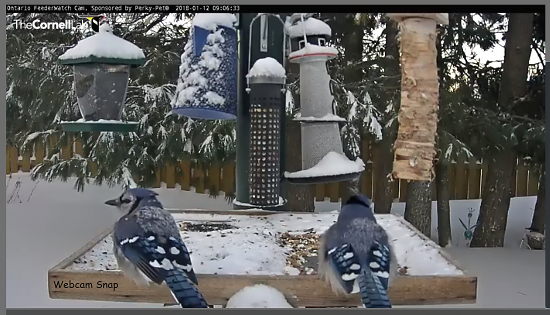
Anywhere from 4 to 10 Blue Jays come around. These 2 were particularly frosted in the -47C wind chills we were getting.
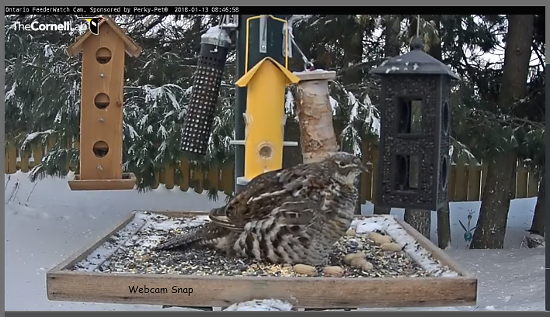
1 of 2 Ruffed Grouse that I suspect are visiting. I never see them together but 1 seems to be quite a bit smaller than the other. Male & female, likely.
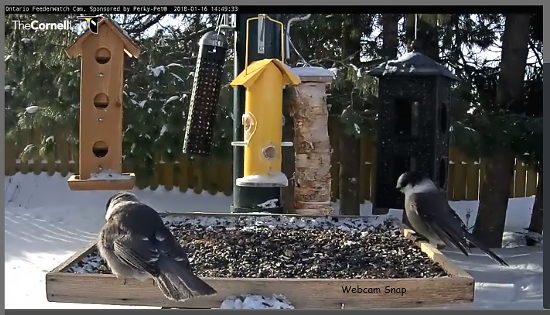
My beloved Gray Jays. A pair has been visiting the feeder all winter, snacking on seeds, peanuts & peanut butter (in the birch log).
To end this month, here are a couple of photos I took recently. It’s been much too cold to take my camera outside (let alone ME going outside!!) ….. we were having temperatures of -40C (base temp) with wind chills hitting -50 in the region!! …. so these shots are through windows.
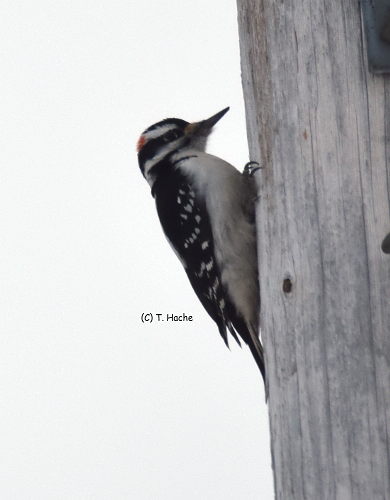
I have a pair of Hairy Woodpeckers visiting sporadically. This is the male on the hydro pole outside of my back gate.
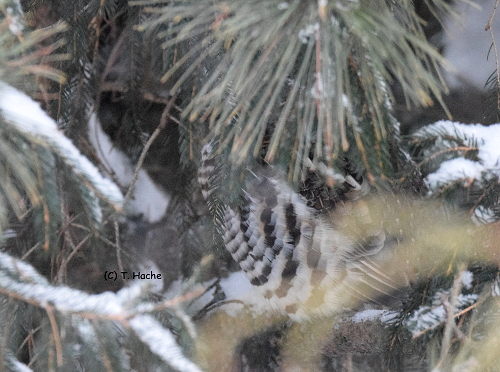
Sometimes, the Grouse will roost in my spruce & pine trees to snooze the afternoon away! She’ll come out to the platform feeder at dusk for a final snack before flying off to roost somewhere safer at night.
Until next time, thanks for reading & stay warm!



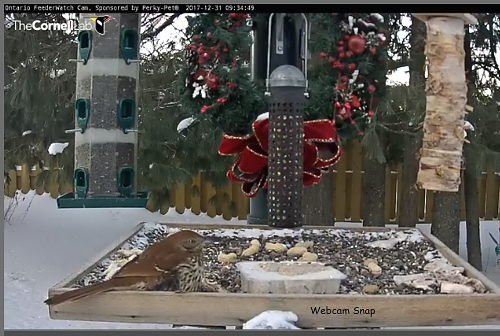
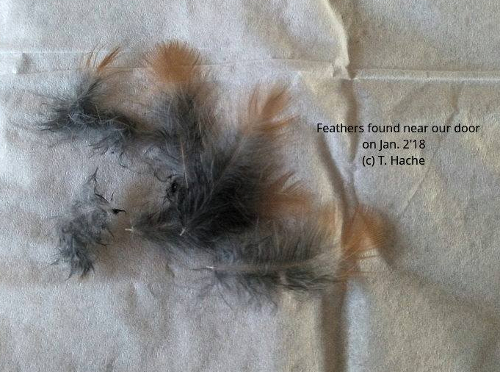
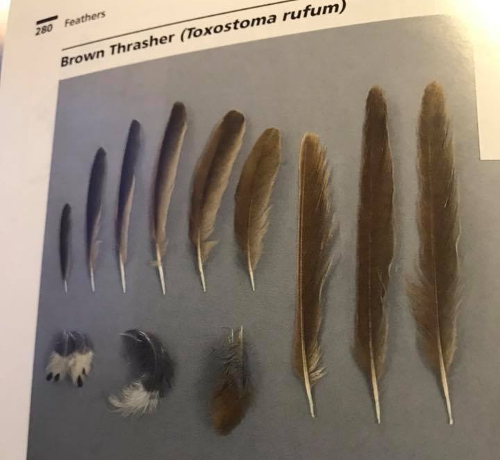
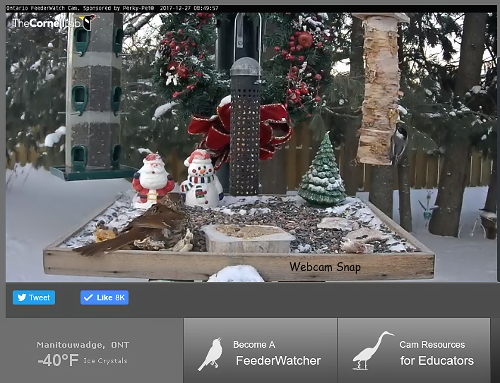
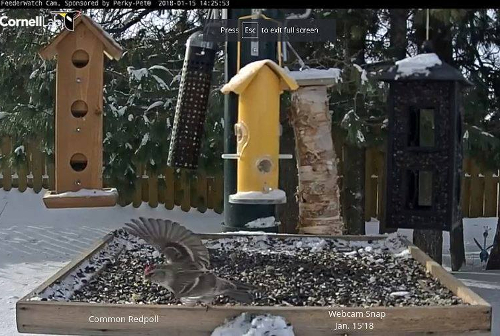
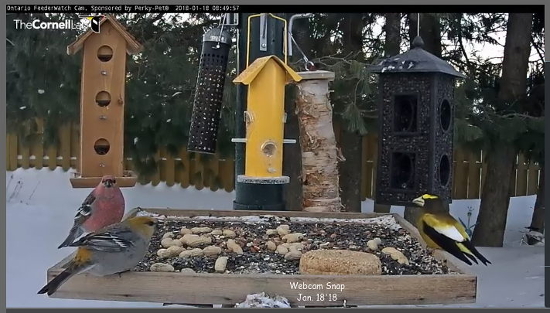
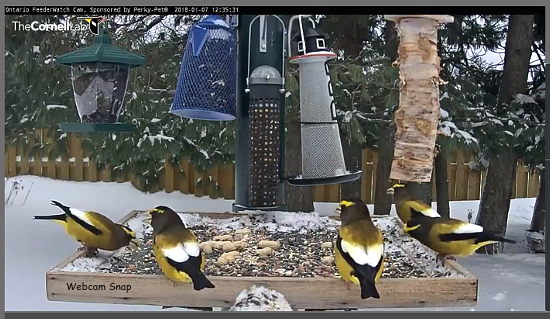
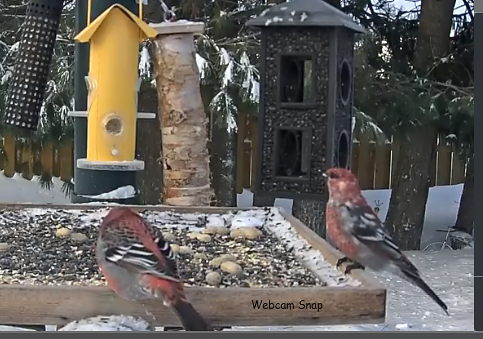
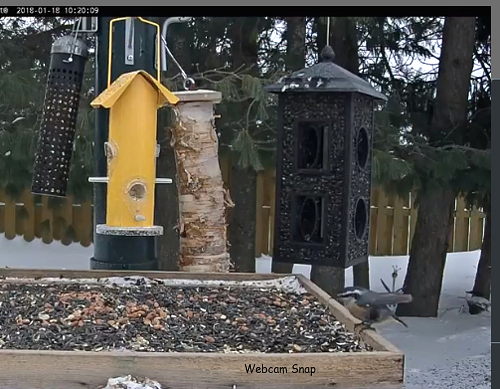
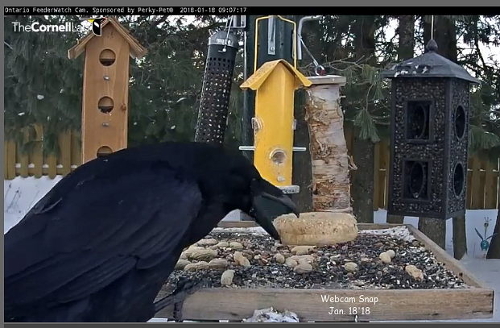
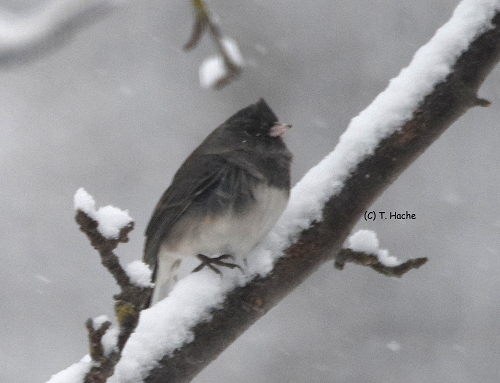
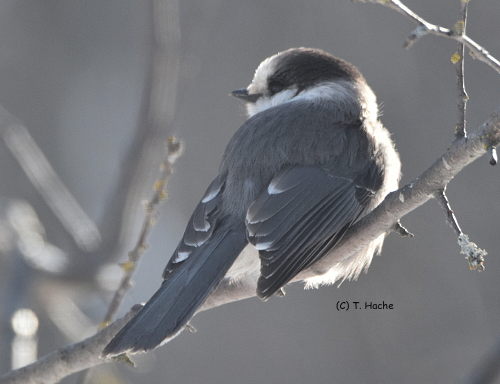
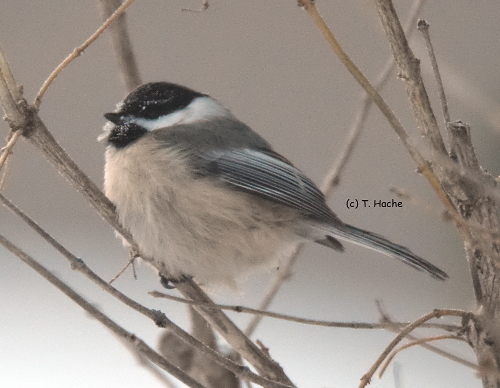
Thanks again for your interesting and heartfelt reporting that helps a bird-loving, virtually-birdless-city-centre dweller survive!
We miss our Brown Thrasher too! Thanks again Tammie for all you did to make life bearable for him in rhat bitter cold!
Enjoyed seeing your junco they are on the ground everyday here in Southern Illinois, but in smaller numbers than usual. My cardinals are in large numbers this year with 3 to 4 male and females at the feeders at one time!
We’ve had a January thaw..56 degrees today. Birds are moving around a little more. A red tailed hawk took a swipe at my crowded feeders this am but came up empty! It sure cleared the deck though!
Thank you for all you do! I will try to snap a picture or two when the cardinals are here!
Once again beautifully written blog.Thanks for taking the time to
do this. The brown Thrasher reminds
me of all the birds that come and passed on. Birds have a special way
of interacting with our lives and
Making us feel better.
That would be gray JAYS
There is a fabulous article about gray jaws in the latest Living Bird magazine.
As for the trasher, it still makes me sad. Perhaps it is related to the bird’s ability to survive, and also to its innocence. I enjoyed seeing him/her each day, and we were all hoping for its survival.
It’s a known fact that male evening grosbeaks will drive females and any young away from a food source/sources, during winter/food shortages. Re f; Corn hill University for full info.